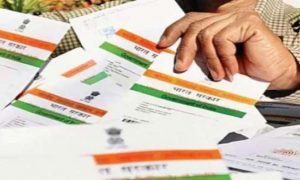What comes to mind when you think about gold? Surely its rich cultural significance in our country is a no-brainer. It’s even among the most preferred investment options for many Indians, right?
But no matter what your purpose for buying gold is, one thing that you must have noticed is the variance in its price. In different states across India, which is surely one of the largest consumers of gold in the world, the price of gold is different. And it varies on a day-to-day basis too.
If you check the price of gold in Maharashtra, West Bengal, Rajasthan, or any other state across India, gold prices are likely to be different everywhere.
But why, you may ask? Well, there are not one or two but multiple factors that affect gold’s price in a particular country and its states.
Read More: Industrial Production Grows In June 3.7% Vs 5.2% In May
Factors That Impact Gold Rates
Multiple factors, such as import duty, transportation cost, purity levels, and local demand and supply, play different roles in computing the price of gold. Also, there is no standard gold invoicing pattern in the country, and the billing system varies from one jeweller to the next. Every city has its own jewellery association, and the gold rate is declared by these associations every morning, due to which the gold rate varies in each town.
Logistics & Transportation Costs
One of the main reasons for the variation in gold prices from city to city is the cost of logistics and transportation. Gold is a heavy and valuable metal that requires secure transportation.
The cost of transportation varies depending on the location, and this can affect the price of gold in different cities, as per ICICI Direct. Transportation costs depend on various factors, such as distance, mode of transportation, and security measures taken. If the transportation costs are high, the gold prices in a particular city are likely to also be high.
Read More: ONGC Q1 Net Profit Drops 34% on Lower Oil Prices, Output
Purity Of Gold
Purity level is another factor that contributes to the difference in gold rates in different cities. The purity of gold is measured in karats, and the higher the karat value, the purer the gold is.
When it comes to purity, the price of gold jewellery depends on two things: a) the parts of gold in the jewellery, that is, 22KT, 18KT, or 14KT; and b) the type of metal used to mix with the gold.
As the purity of gold decreases, the cost of gold will also be lower, as per the ET report. For instance, 18KT gold will be cheaper than 22KT.
Demand & Supply
Just like other assets, local market conditions play a significant role in determining gold prices in different cities. The demand and supply of gold in a particular city can affect the price.
Again, the demand for gold is influenced by various factors such as the local economy, cultural significance, and the availability of alternatives such as silver or platinum. For example, if there is a high demand for gold in a city, the price will be higher compared to a city with low demand. Similarly, if there is a surplus of gold in a city, the price will be lower compared to a city with a shortage.
Read More: ‘Every Meal Matters’: How Zomato Founder Deepinder Goyal Revolutionized Food Delivery In India
Retailers’ Margins
Another factor is this. Retailers also play a significant role in determining the gold prices in different cities. The margins that retailers keep can vary from city to city, and this can affect the price of gold. For example, a retailer in a city with a high margin will charge a higher price compared to a retailer in a city with a low margin.
Government Duties & Tariffs
In addition to these factors, the Indian government also affects the gold rate by imposing import duties on gold. The import duties on gold can vary depending on the political and economic conditions of the country. When the import duties are high, the gold prices in India also tend to be high.
Also, earlier, each state government was levying VAT on gold, which differed from state to state. However, with the introduction of the Goods and Services Tax (GST), which replaced the VAT, the tax on gold is uniform in all the states. Currently, the GST rate charged on gold is 3%.
So, after understanding these factors that impact gold’s price, you are better positioned to make informed decisions when contemplating the idea of buying or selling gold. It is also important to keep an eye on the international gold market, as global economic conditions and political events can also have an impact on gold prices in India’s different states.
How Calculation Of Gold Is Done
Final price of the jewellery = Price of (22 KT, 18 KT, or 14 KT) gold X weight in grammes + Making charges + GST at 3% on (Price of jewellery + making charges).
Also keep in mind that charges vary depending on the type of gold jewellery you are buying. This is because every ornament requires a different style of cutting and finishing. It also depends on how much fine detailing is required in the design, i.e., if it is man-made or machine-made. Machine-made jewellery usually costs less than man-made ones, as per the ET report.
Making charges can be quoted in two ways: either as a percentage of the gold value or as a flat making charge per gramme of gold.





































